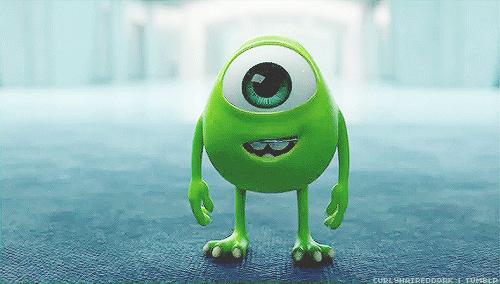Hi, Mike!
Rationale:
The purpose of this lesson is to teach children the correspondence i_e= /I/. Learning this correspondence will help students with recognizing, spelling, and reading words with i_e. They will learn to recognize these words with a symbolic image and catchphrase, “Hi, Mike!” with an image of Mike Wazowski. Students will spell and read the words that follow this pattern through a letterbox lesson, read a decodable book, and complete an assessment worksheet.
Materials:
Picture of Mike Wazowski, whiteboard, letterboxes for each student, letters r, I, d, e, s, t, m, n, v, and b, tongue tickler decodable book Kite Day at Pine Lake (attached below), and worksheet assessment (attached below)
Procedures:
-
We have learned our short vowel /i/ in words like “kit,” but we need to learn our code in order to pronounce words with long vowel /I/. We are going to learn about long I and magic E that makes the letter say its own name /I/. When I hear the /I/ sound, I think of Mike Wazowski and his one eye and I say, “Hi, Mike!”
-
We need to learn the sound I makes before we can learn to spell words with /I/. Watch my chin when I make i say its name. I’ll show you: bike. When I say the word “bike,” we hear i say its name, and my chin drops to my chest [gesture where your chin drops down]. Now let’s try together! If you hear i say its name, say “Hi, Mike!” [Have children respond to ride, site, mine, dive, tribe and use our catchphrase as well as gesture when they hear long i].
-
Now that we know what sound i makes, we can work on spelling words with /I/ in them! One way we can spell /I/ is with the letter i and then a magic e at the end of the word [write i_e on whiteboard]. Let’s use the word mile because we hear /I/ in this word. “We rode a mile on our bike.” Let’s write mile in our letterboxes. First, we need to stretch out each sound: /m/ /I/ /l/. We will need three boxes. I heard the i right after the /m/, so I am going to put it in the 2nd box and we will leave a space and then put our magic e [demonstrating on the board]. Our first sound was /m/, so what letter do we put in our first box? [children answer]. We have our second sound already, and our last sound was /l/ so we need to put what letter? [children answer].
-
I’m going to let you all try this on your own now! Our first word from our list earlier is ride, “I ride my scooter.” You will need 3 boxes for this word. Now sound it out slowly, and place your letter tiles in the correct box. Remember, i says its name! [Give children appropriate amount of time]. What sound do we hear first? [children imitate sound]. And what is that corresponding letter? [children answer, I write answer on whiteboard]. Awesome! After /r/, we hear what? [Children answer, I write answer on whiteboard]. Hi, Mike! I heard the i say its name! Now what sound do we hear? [children answer]. And what letter makes that sound? [children answer, and I write letter on whiteboard]. Now, think really hard about our code! Remember how we said there could be a magic letter when our i says its name? What letter was it? [children answer, and I write final letter]. [Continue this process for remaining words site, mine, dive, tribe, I monitor progress and write answers after every letterbox word].
-
Now that we have our sound and we know how to spell some of the words with this code, I want you to read our tongue tickler from my chart. [Chart says “The wife hides her fine size bite”]. Everyone read the first word [the is a sight word, so children know]. Now, let’s sound out the next word since it has our code! [I cover the “ife”] W makes what sound? [Children answer /w/, uncover rest of word]. If we see our i and magic e, we make what sound? [Children answer /I/]. Now let’s blend those sounds together, /w/+/I/= /wI/. Now, we have an f, which makes what sound? [children answer /f/]. Finally, we have our magic e and we know that letter does not make a sound when it follows our pattern [points to the whiteboard with i_e written]. So, let’s blend all of our sounds together! /wwww/ /IIIII/ /ffffff/, /w//I//f/, wife! [Have children continue reading words as a group, helping as needed, and read sentence together at end].
-
We are going to read the book Kite Day at Pine Lake. This story is about all the friends who are flying their kites at Pine Lake. Everybody is having fun playing with their kites when all of the sudden they notice that Bob does not have a kite! How will Bob have fun with his friends if he does not have a kite? [As a class we will read the book and discuss what happens throughout the text].
-
Did you enjoy that book? Bob has great friends who wanted to help him have fun and build him a kite too! So, before we are all done with our code i_e= /I/, we are going to solve some puzzles. Each of you will write the long i, magic e word that matches the picture. Then, pick out the words you’ve written from the crossword puzzle.
References:
Sample: Geri Murray, "Oh, I didn't know!"
https://sites.google.com/site/readingwritingconnection/beggingreadingdesign
Book: Cushman, Sheila, et al. . Educational Insights, 1990.
Worksheet: https://www.tes.com/teaching-resource/magic-e-i-e-activity-sheet-6218226
